Abstract
The locus for autosomal dominant ataxia with a diagnosis of olivo-ponto-cerebellar atrophy at autopsy has been previously assigned to chromosome 6p. However, evidence for two alternative locations has been reported. We have recently described a large potential founder-effect population of such patients in the Holguin province of Cuba. With an estimated 1,000 patients available for analysis, this extensive cluster of families provides a unique opportunity for the definitive localization of the genetic mutation. Linkage analysis between the disease locus in this population and markers within and flanking the HLA region on chromosome 6 were undertaken in 12 families comprising over 100 affected individuals. Despite similarity in the clinical phenotype between those families where the disease locus has been reported to be linked to the HLA locus and the Cuban patients, no evidence of linkage to this region could be demonstrated in the latter. The disease locus was excluded from a 96-cM genetic interval of the short arm of chromosome 6, encompassing the F13A1–HLA–GLO1–MUT/D6S4 loci. These data strongly support the existence of genetic heterogeneity for the disease.
Full text
PDF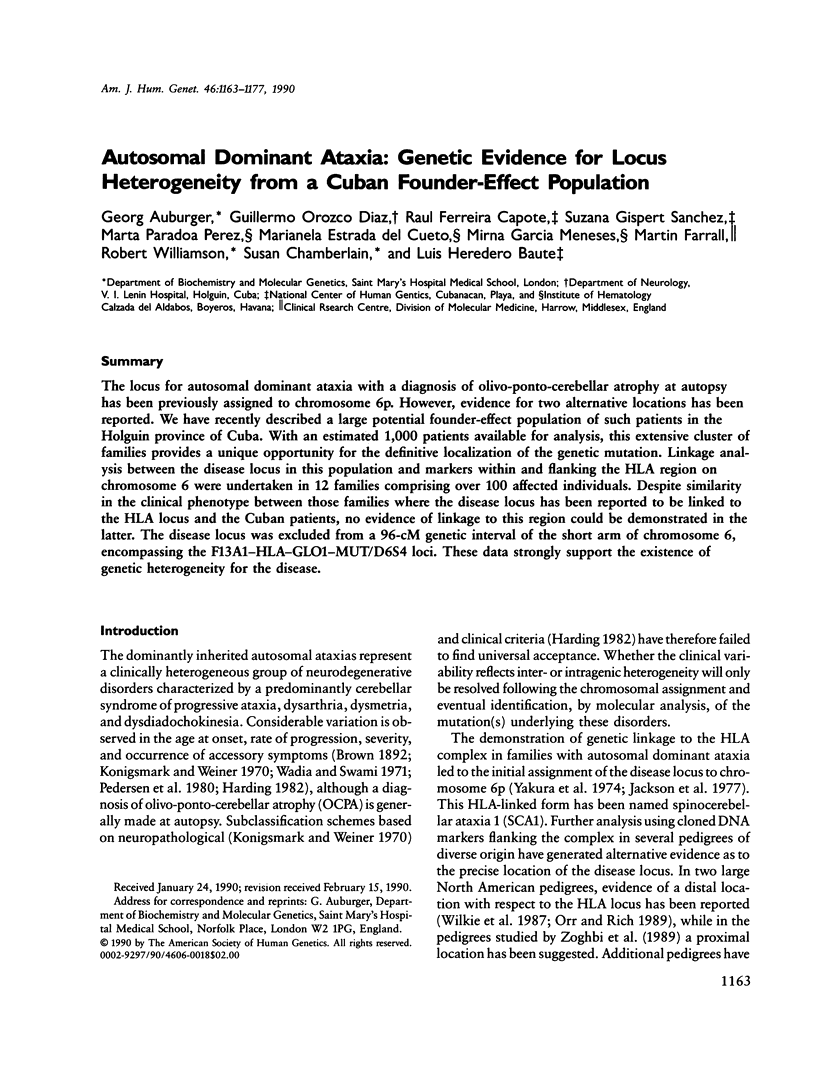

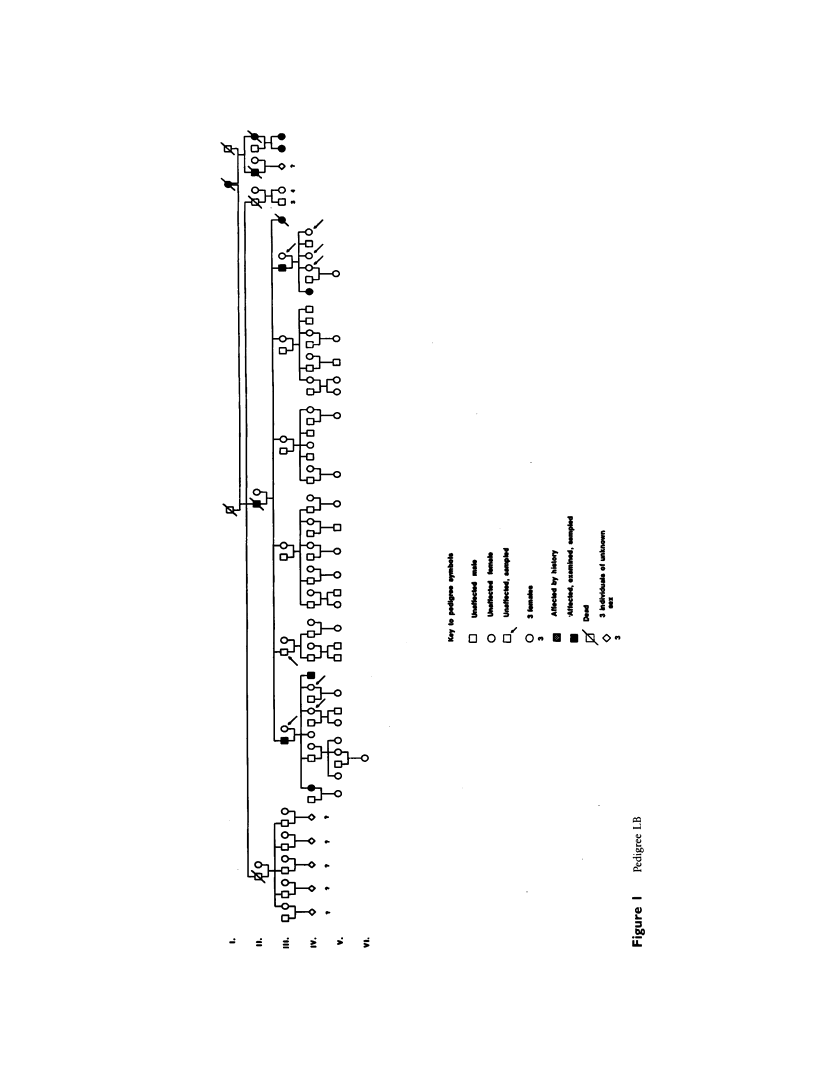
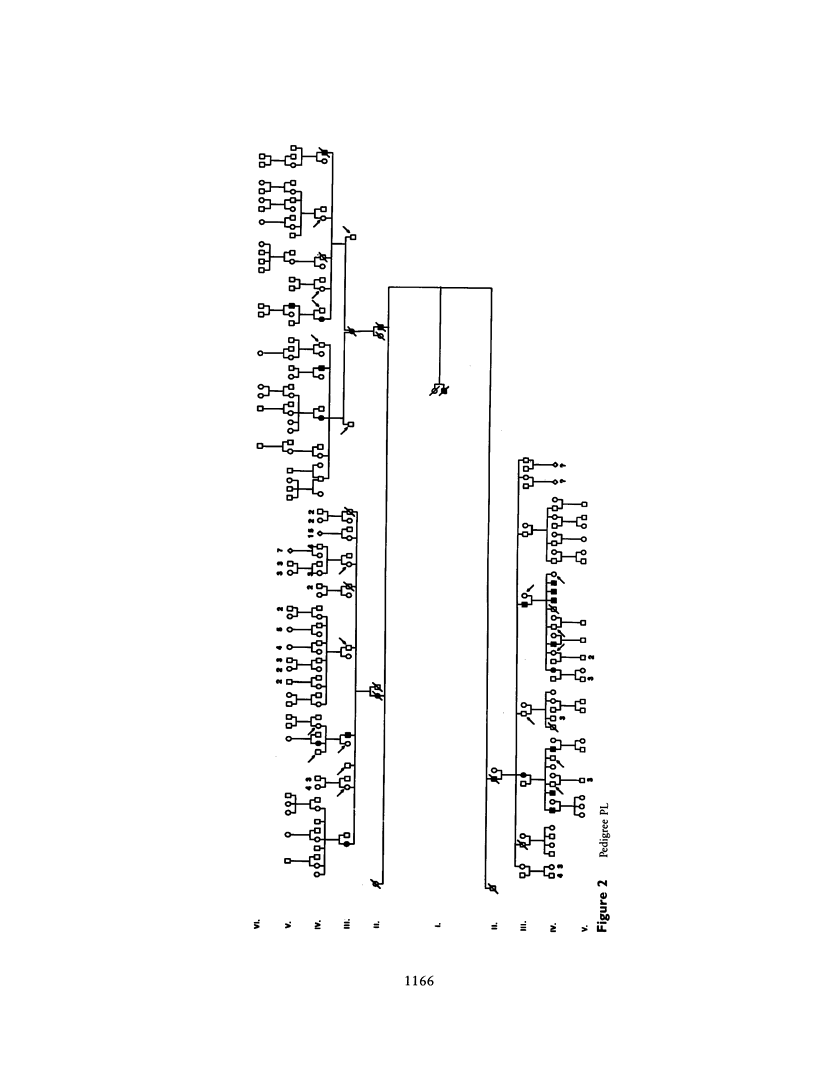
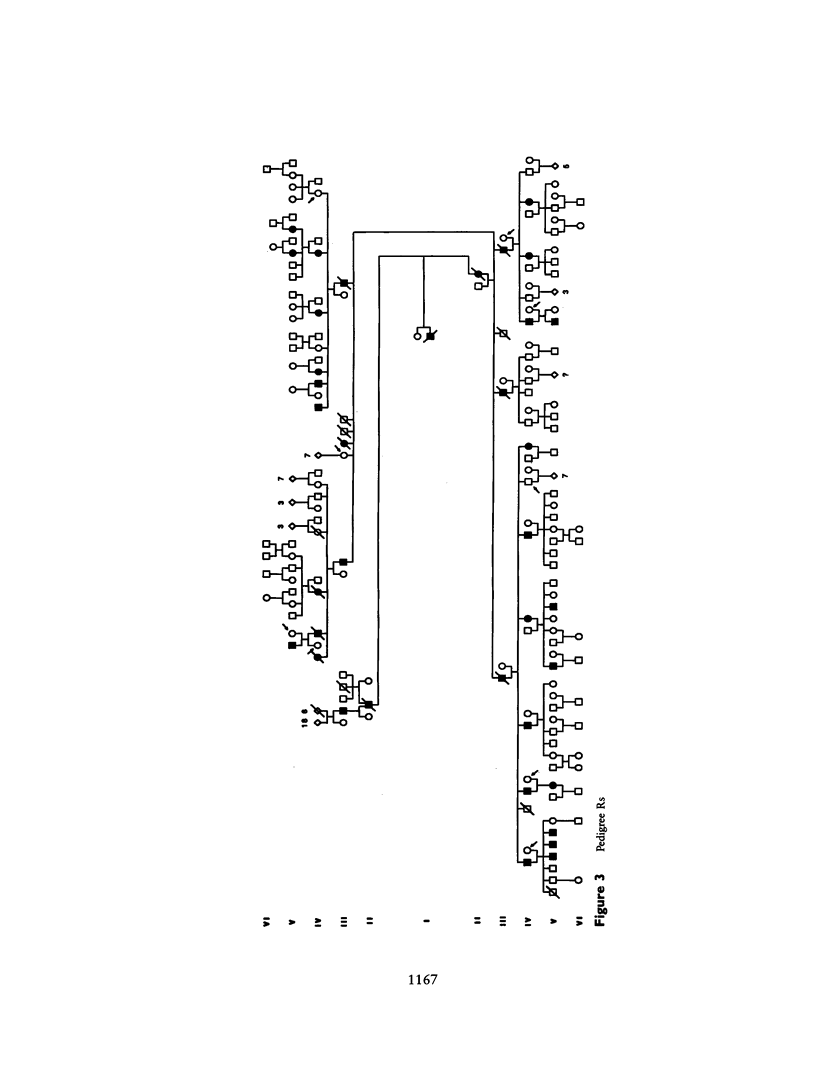
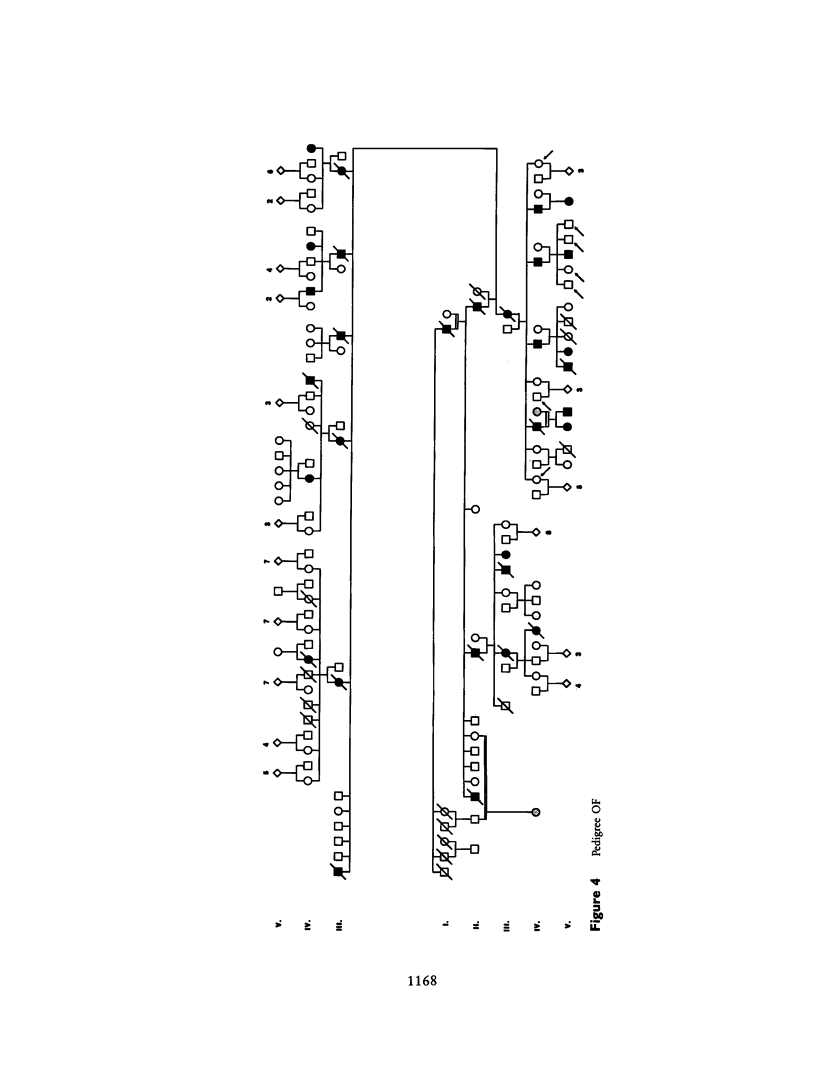
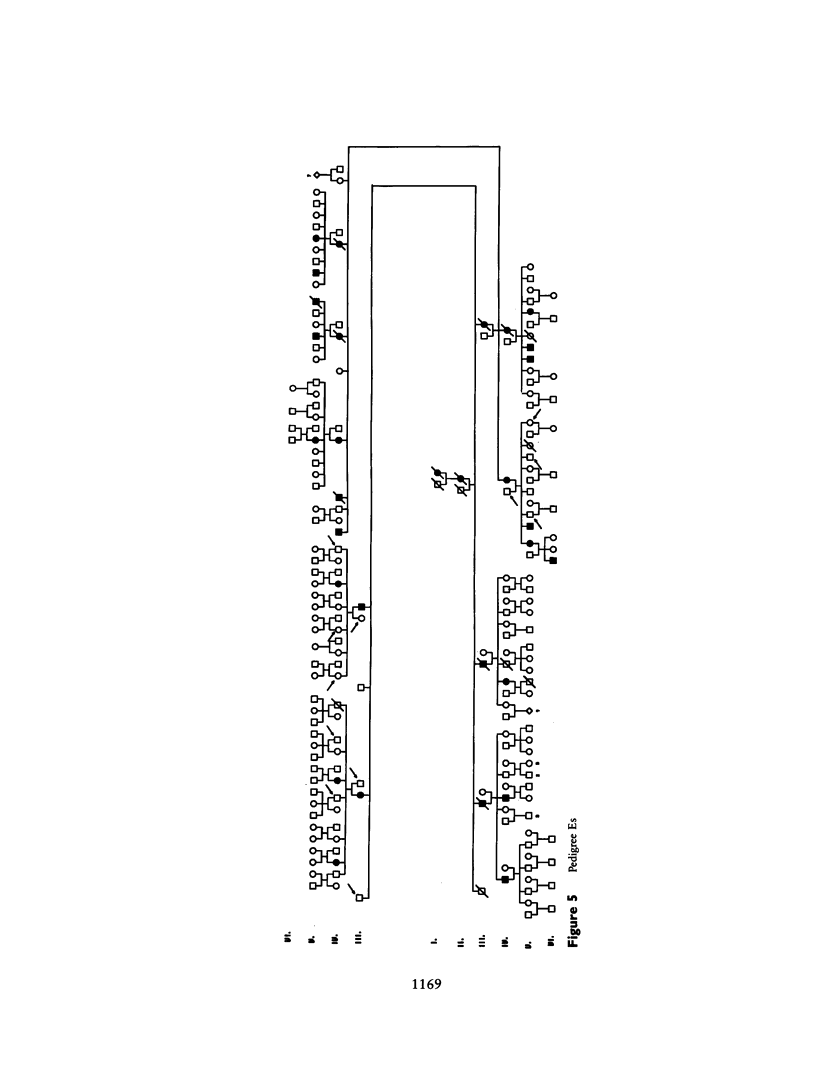

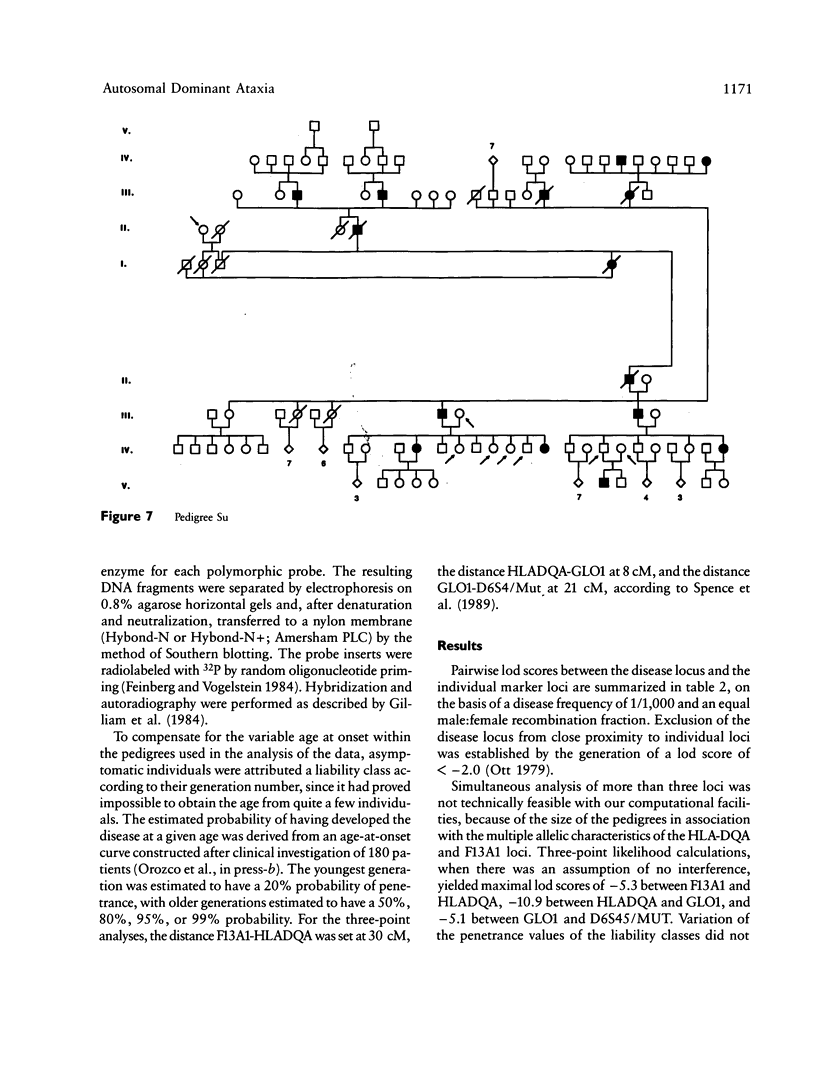

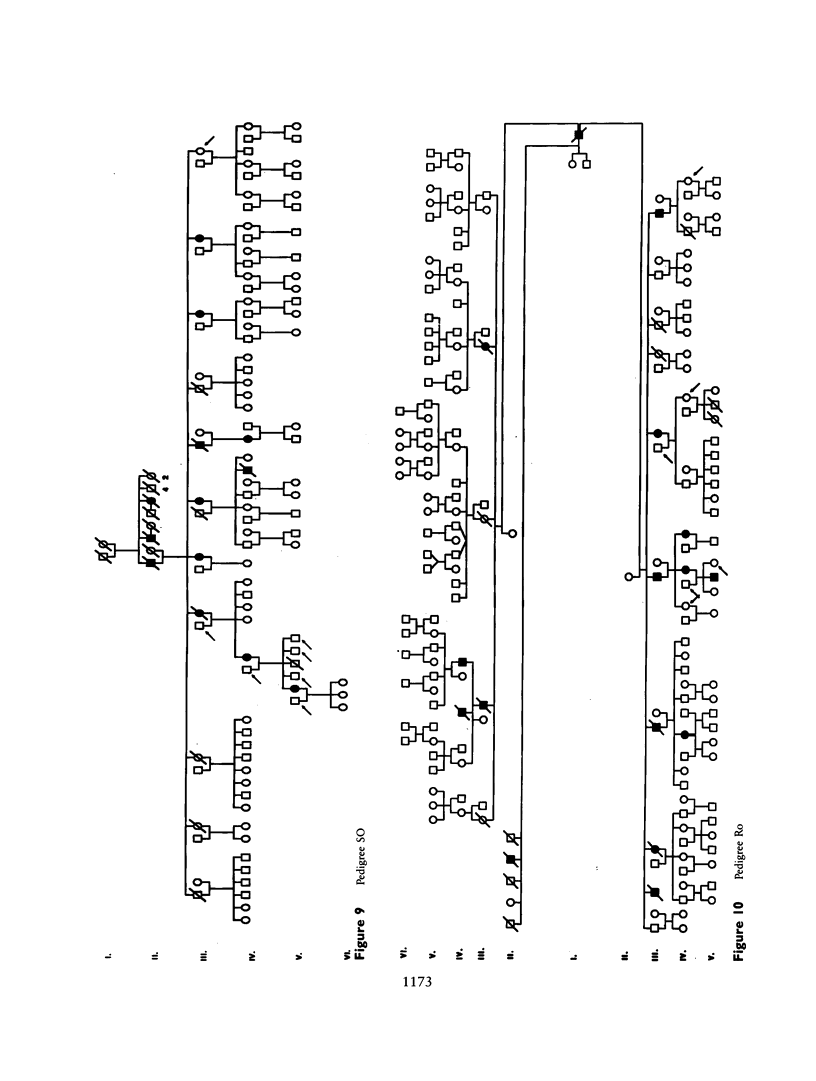

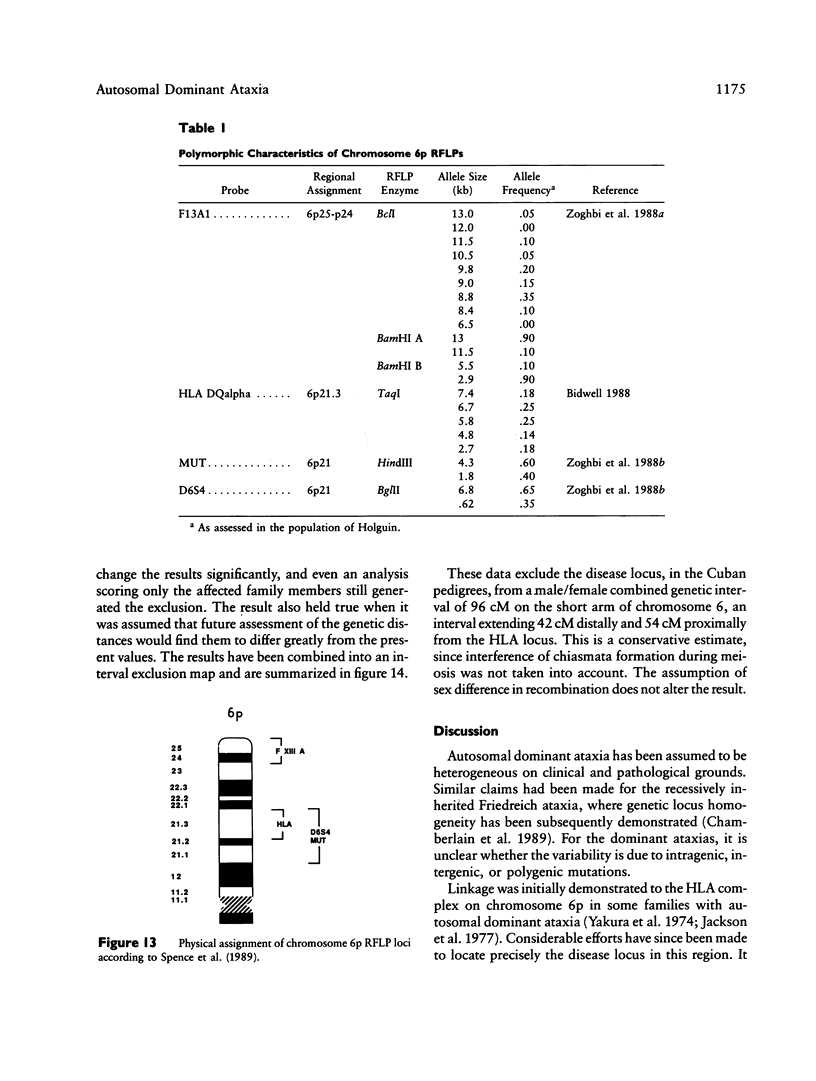

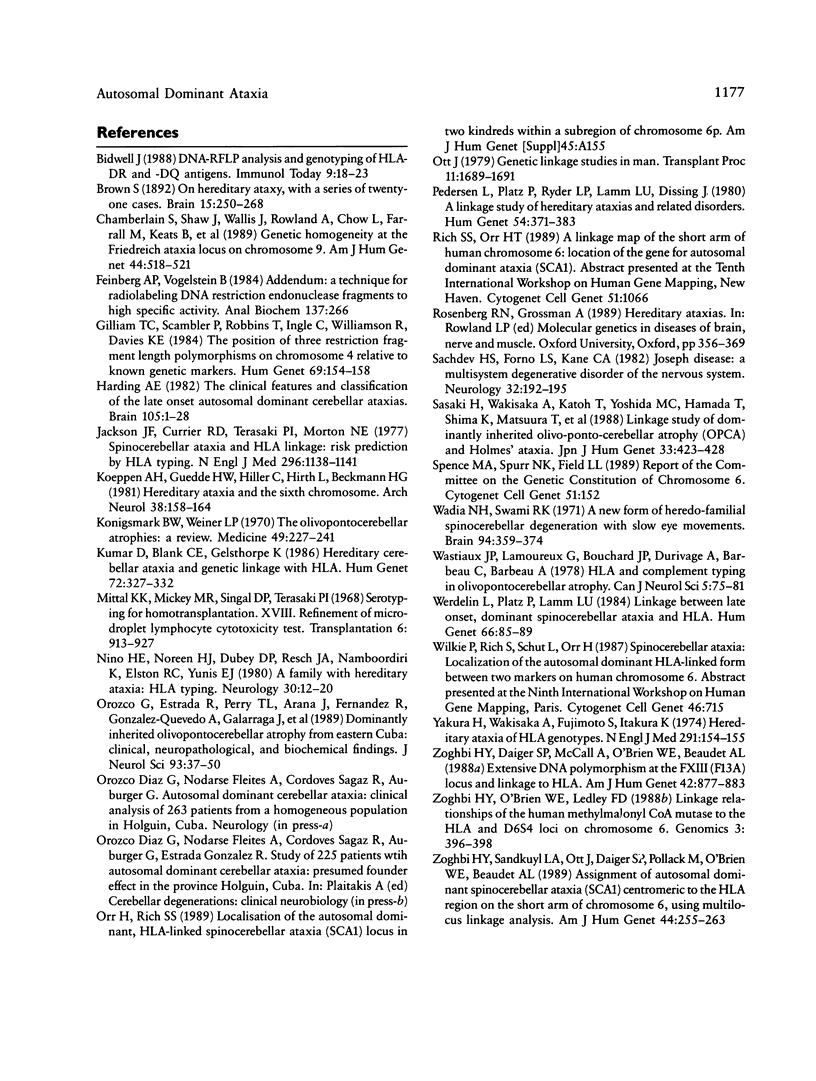
Selected References
These references are in PubMed. This may not be the complete list of references from this article.
- Bidwell J. DNA-RFLP analysis and genotyping of HLA-DR and DQ antigens. Immunol Today. 1988 Jan;9(1):18–23. doi: 10.1016/0167-5699(88)91351-5. [DOI] [PubMed] [Google Scholar]
- Chamberlain S., Shaw J., Wallis J., Rowland A., Chow L., Farrall M., Keats B., Richter A., Roy M., Melancon S. Genetic homogeneity at the Friedreich ataxia locus on chromosome 9. Am J Hum Genet. 1989 Apr;44(4):518–521. [PMC free article] [PubMed] [Google Scholar]
- Feinberg A. P., Vogelstein B. "A technique for radiolabeling DNA restriction endonuclease fragments to high specific activity". Addendum. Anal Biochem. 1984 Feb;137(1):266–267. doi: 10.1016/0003-2697(84)90381-6. [DOI] [PubMed] [Google Scholar]
- Gilliam T. C., Scambler P., Robbins T., Ingle C., Williamson R., Davies K. E. The positions of three restriction fragment length polymorphisms on chromosome 4 relative to known genetic markers. Hum Genet. 1984;68(2):154–158. doi: 10.1007/BF00279306. [DOI] [PubMed] [Google Scholar]
- Harding A. E. The clinical features and classification of the late onset autosomal dominant cerebellar ataxias. A study of 11 families, including descendants of the 'the Drew family of Walworth'. Brain. 1982 Mar;105(Pt 1):1–28. doi: 10.1093/brain/105.1.1. [DOI] [PubMed] [Google Scholar]
- Jackson J. F., Currier R. D., Terasaki P. I., Morton N. E. Spinocerebellar ataxia and HLA linkage: risk prediction by HLA typing. N Engl J Med. 1977 May 19;296(20):1138–1141. doi: 10.1056/NEJM197705192962003. [DOI] [PubMed] [Google Scholar]
- Koeppen A. H., Goedde H. W., Hiller C., Hirth L., Benkmann H. G. Hereditary ataxia and the sixth chromosome. Arch Neurol. 1981 Mar;38(3):158–164. doi: 10.1001/archneur.1981.00510030052007. [DOI] [PubMed] [Google Scholar]
- Konigsmark B. W., Weiner L. P. The olivopontocerebellar atrophies: a review. Medicine (Baltimore) 1970 May;49(3):227–241. doi: 10.1097/00005792-197005000-00003. [DOI] [PubMed] [Google Scholar]
- Kumar D., Blank C. E., Gelsthorpe K. Hereditary cerebellar ataxia and genetic linkage with HLA. Hum Genet. 1986 Apr;72(4):327–332. doi: 10.1007/BF00290959. [DOI] [PubMed] [Google Scholar]
- Mittal K. K., Mickey M. R., Singal D. P., Terasaki P. I. Serotyping for homotransplantation. 18. Refinement of microdroplet lymphocyte cytotoxicity test. Transplantation. 1968 Nov;6(8):913–927. doi: 10.1097/00007890-196811000-00006. [DOI] [PubMed] [Google Scholar]
- Nino H. E., Noreen H. J., Dubey D. P., Resch J. A., Namboodiri K., Elston R. C., Yunis E. J. A family with hereditary ataxia: HLA typing. Neurology. 1980 Jan;30(1):12–20. doi: 10.1212/wnl.30.1.12. [DOI] [PubMed] [Google Scholar]
- Orozco G., Estrada R., Perry T. L., Araña J., Fernandez R., Gonzalez-Quevedo A., Galarraga J., Hansen S. Dominantly inherited olivopontocerebellar atrophy from eastern Cuba. Clinical, neuropathological, and biochemical findings. J Neurol Sci. 1989 Oct;93(1):37–50. doi: 10.1016/0022-510x(89)90159-7. [DOI] [PubMed] [Google Scholar]
- Ott J. Genetic linkage studies in man. Transplant Proc. 1979 Dec;11(4):1689–1691. [PubMed] [Google Scholar]
- Pedersen L., Platz P., Ryder L. P., Lamm L. U., Dissing J. A linkage study of hereditary ataxias and related disorders. Evidence of heterogeneity of dominant cerebellar ataxia. Hum Genet. 1980;54(3):371–383. doi: 10.1007/BF00291585. [DOI] [PubMed] [Google Scholar]
- Sachdev H. S., Forno L. S., Kane C. A. Joseph disease: a multisystem degenerative disorder of the nervous system. Neurology. 1982 Feb;32(2):192–195. doi: 10.1212/wnl.32.2.192. [DOI] [PubMed] [Google Scholar]
- Wadia N. H., Swami R. K. A new form of heredo-familial spinocerebellar degeneration with slow eye movements (nine families). Brain. 1971;94(2):359–374. doi: 10.1093/brain/94.2.359. [DOI] [PubMed] [Google Scholar]
- Wastiaux J. P., Lamoureux G., Bouchard J. P., Durivage A., Barbeau C., Barbeau A. HLA and complement typing in olivo-ponto-cerebellar atrophy. Can J Neurol Sci. 1978 Feb;5(1):75–81. [PubMed] [Google Scholar]
- Werdelin L., Platz P., Lamm L. U. Linkage between late onset, dominant spinocerebellar ataxia and HLA. Hum Genet. 1984;66(1):85–89. doi: 10.1007/BF00275192. [DOI] [PubMed] [Google Scholar]
- Yakura H., Wakisaka A., Fujimoto S., Itakura K. Letter: Hereditary ataxia and HL-A. N Engl J Med. 1974 Jul 18;291(3):154–155. doi: 10.1056/NEJM197407182910314. [DOI] [PubMed] [Google Scholar]
- Zoghbi H. Y., Daiger S. P., McCall A., O'Brien W. E., Beaudet A. L. Extensive DNA polymorphism at the factor XIIIa (F13A) locus and linkage to HLA. Am J Hum Genet. 1988 Jun;42(6):877–883. [PMC free article] [PubMed] [Google Scholar]
- Zoghbi H. Y., O'Brien W. E., Ledley F. D. Linkage relationships of the human methylmalonyl CoA mutase to the HLA and D6S4 loci on chromosome 6. Genomics. 1988 Nov;3(4):396–398. doi: 10.1016/0888-7543(88)90135-8. [DOI] [PubMed] [Google Scholar]
- Zoghbi H. Y., Sandkuyl L. A., Ott J., Daiger S. P., Pollack M., O'Brien W. E., Beaudet A. L. Assignment of autosomal dominant spinocerebellar ataxia (SCA1) centromeric to the HLA region on the short arm of chromosome 6, using multilocus linkage analysis. Am J Hum Genet. 1989 Feb;44(2):255–263. [PMC free article] [PubMed] [Google Scholar]


